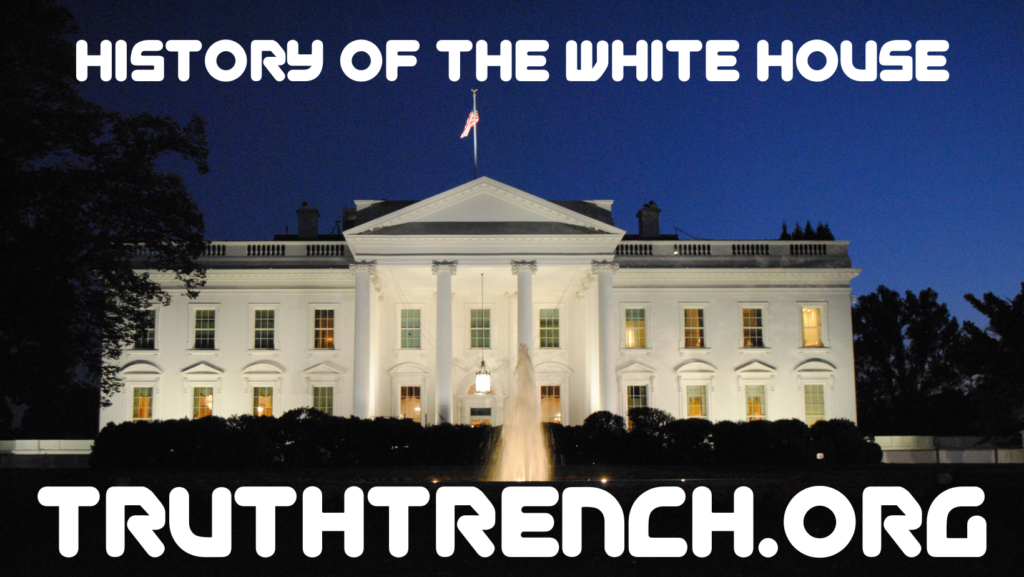For those who value truth and patriotism, understanding the inner workings of the White House is essential. In this comprehensive exploration, we will delve deep into the history, significance, and functions of the White House, America’s iconic seat of power.
From its construction in 1792 to its present-day role as the official residence and workplace of the President of the United States, the White House holds a rich historical tapestry, reflecting the nation’s growth and evolution. It is important that we uphold the glory of the place while our nation faces the tumultuous times we march through now.
Significance of the White House: Symbolizing The American Republic, Diplomacy, and Leadership
The White House, with its iconic neoclassical architecture and historic prominence, serves as a symbol of American democracy, diplomacy, and leadership.
Republic: The White House stands as a visual representation of the American Republic. It is the residence of the President, who is elected by the people, embodying the principles of a government of the people, by the people, and for the people. The states each have their symbolic residence of the executive. The pinnacle of these esteemed estates being the national home to our leader.
Diplomacy: As the official residence of the President, the White House is a hub for diplomatic relations. It hosts foreign dignitaries, heads of state, and diplomats from around the world. It serves as a venue for high-stakes negotiations and discussions that shape international relations. The alabaster house makes for a serious home court advantage.
Leadership: The White House is not just a building; it is a symbol of American leadership on the global stage. The decisions made within its walls impact not only the nation but also the world. It represents the highest office of authority in the United States. Abroad it stands as a symbol of strength and power.
The White House has been the backdrop for numerous significant events, from the signing of important legislation to peace treaties and international summits, underscoring its central role in shaping the course of American history.
Functions and Operations: Behind the Scenes at the White House
The day-to-day operations of the White House are a well-orchestrated dance involving a multitude of dedicated staff and departments.
Key Staff: The White House is home to a diverse team, including advisors, press secretaries, policy experts, and security personnel. These individuals work tirelessly to support the President in executing their duties.
Departments: Various departments, such as the Office of Management and Budget (OMB) and the National Security Council (NSC), play critical roles in policymaking and governance. The White House Chief of Staff coordinates these departments, ensuring efficient communication and decision-making.
Residence: The White House serves as the President’s residence during their time in office. It is where they live with their family and where they hold private meetings and informal gatherings.
Workplace: The White House also functions as the President’s workplace, where they meet with advisors, hold press conferences, and make policy decisions. The Oval Office is the iconic setting for many of these activities. The employees who work tirelessly to make the house a home deserve the praise of many. The cleaner, cooks and craftsmen who make daily life possible in the White House are the true heroes operating behind the scenes.
Ceremonial Venue: The White House hosts a wide range of ceremonial events, from state dinners honoring foreign leaders to medal presentations and holiday celebrations. It is a symbol of national unity and pride.
White House Historical Facts: A Rich Tapestry of History
The White House boasts a wealth of historical facts and stories that highlight its unique place in American history.
Architectural Design: Designed by Irish architect James Hoban in the neoclassical style, the White House was constructed over several years and has undergone multiple renovations and expansions since its initial completion in 1800. While President Truman was in office, the White House underwent its most extensive remodeling. Whole floors were torn down, walls were stripped to the studs and the foundation was scraped away to make massive installations of new rooms and passageways possible.
War of 1812: During the War of 1812, the White House endured British forces’ burning in 1814. It was rebuilt and strengthened, becoming a symbol of resilience and determination. Our nation has Dolly Madison and her staff to thank for saving such wonderful works as the massive painting of George Washington, which stills hangs in the oval office to this day as a reminder of how fragile the Republic truly is.
Presidential Residences: The Inner Sanctum of Decision-Making
The White House is a complex structure with various sections, each serving a distinct purpose in the functioning of the presidency.
Oval Office: The Oval Office is the President’s primary workspace, where they meet with advisors, sign bills into law, and address the nation through televised addresses.
West Wing: The West Wing houses the President’s staff and offices, including the White House Situation Room, where critical national security decisions are made.
East Wing: The East Wing contains the First Lady’s office, the White House Social Secretary’s office, and is often associated with ceremonial functions and events.
Iconic Moments: Shaping the Nation’s Destiny
Throughout its history, the White House has been a witness to numerous iconic moments that have left an indelible mark on the nation.
Inaugurations: Presidential inaugurations are held on the steps of the U.S. Capitol, but the swearing-in often takes place in the White House Blue Room. These events mark the peaceful transition of power in the United States.
State Dinners: State dinners held at the White House are elaborate affairs attended by foreign dignitaries and leaders, fostering diplomatic relations and cultural exchange.
Memorable Speeches: The White House has been the venue for many memorable presidential speeches that have inspired and reassured the nation during times of crisis and change.
White House Restoration and Preservation: Preserving a National Treasure
The White House is not just a historic building; it’s a living piece of history. Ongoing efforts are dedicated to preserving and maintaining this national treasure for future generations. Restoration projects, guided by historical accuracy, ensure that the White House retains its architectural splendor while incorporating modern amenities.
Interactive Tours: Exploring the Grandeur and History
For those eager to experience the White House’s grandeur and history, both virtual and physical tours are available. These tours provide an opportunity to explore the building’s iconic rooms and gain insights into its rich history, architecture, and significance.
The White House Today: Navigating the Digital Age
In the digital age, the White House has adapted to new communication channels. It maintains a robust social media presence, using platforms like Twitter and Instagram to engage with the public and disseminate information. Additionally, it faces modern challenges related to cybersecurity and ensuring the privacy and security of its occupants.
The People’s White House
In the pursuit of truth and patriotism, the White House stands as an enduring symbol of American governance and history. By exploring its past, significance, and operations, we deepen our understanding of the institution that plays a central role in our nation’s leadership. It is through this knowledge that we honor the principles and values upon which our great country was founded, making us true patriots and seekers of truth.
Keep up to date with the happenings at the White House – Click Here

